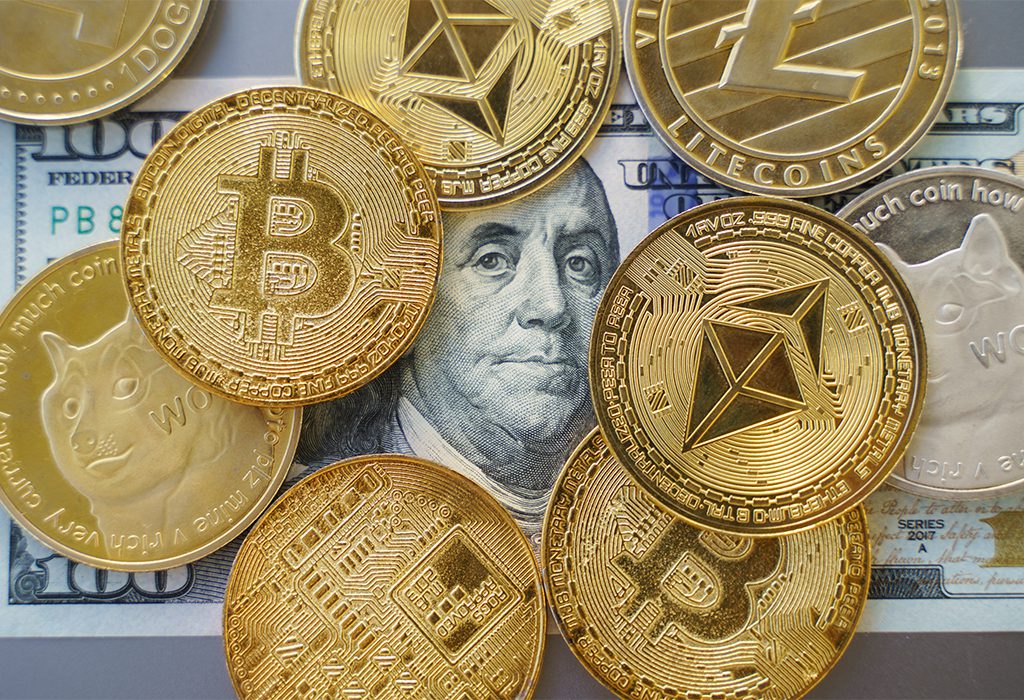
IESE Insight
Saving cryptocurrencies from traditional banks
Balancing stability and risk: securing stablecoin could stem direct contagion from traditional finance to cryptocurrencies, but at what cost to the commercial banking industry?
Amid global market turmoil and fears of a new banking crisis, it’s easy to overlook what is perhaps the most novel development since Silicon Valley Bank (SVB) collapsed: for the first time, traditional finance was the source of direct risk contagion to cryptocurrencies. A deposit bailout stopped the spread, but cryptocurrency investors should take note.
Not that crypto markets have been immune to crisis. 2022 was a tumultuous year for cryptocurrencies and blockchain technology, including the catastrophic failure of the (in theory decentralized) algorithmic stablecoin Terra USD and its sister coin Luna, and the bankruptcy of the centralized exchange FTX due to fraud and misappropriation of customer funds.
But those failures were crypto native in origin, and, while they rattled crypto markets, they had limited spillover into traditional finance. Concern surrounding crypto has mostly centered on its potential to damage traditional finance.
Instead, SVB’s downfall shows that traditional finance can be the source of direct risk contagion for cryptocurrencies. The link between the two is stablecoins, particularly off-chain collateralized stablecoins. A stablecoin is a cryptocurrency that aims to retain a 1:1 exchange rate to a fiat currency, typically the US dollar.
In the case of an off-chain collateralized stablecoin, the collateral supporting the peg is the corresponding fiat currency, i.e., the US dollar. That is, the issuer promises stablecoin holders that it will redeem the coin for the US dollar. The consequence is that the issuer needs to hold US dollar reserves to be able to satisfy the promise – and the only feasible way to do so is to hold a substantial amount of potential redemption demand as deposits in a commercial bank.
Circle Internet Financial, the US-based issuer of the stablecoin USDC, had more than $3 billion deposited in SVB when it closed. Since these funds were not under FDIC deposit insurance protection, there was a real risk of USDC being under-collateralized. This triggered a weekend run on USDC, which extended to on-chain collateralized stablecoins such as DAI and FRAX (which use USDC as collateral). Only after the decision by the Treasury and Federal Reserve to bail out all SVB deposits did USDC return to 1:1.
The stablecoin dilemma
But the deposit bailout doesn’t resolve the fundamental dilemma faced by stablecoins, which currently have a market capitalization of around $130 billion. Like commercial banks, they offer demand deposits that are redeemable at any point and are used as a medium of exchange. Unlike commercial banks, they do not have full control over their asset allocation. While like commercial banks they can decide to split between liquid reserves and yield-generating securities, their liquid reserves are demand deposits in the commercial banking sector. However, in a fractional reserve system the bank receiving the deposit does not keep all of it as liquid reserve. As we have seen in recent days, this constitutes a real de-peg risk.
How to secure stablecoins? One regulatory option would be to allow stablecoin issuers to open accounts directly with the Federal Reserve. For stablecoin issuers this would result in greater control and downside protection of the liquid reserve but would come at the cost of increased scrutiny and regulation. Likewise, holders of stablecoins face a similar trade-off between reducing de-peg risk and increasing transaction censorship risk that might follow increased regulation. For USDC this dilemma will be decided by the Federal Reserve or adjacent government institutions.
Allowing stablecoins to open Federal Reserve accounts — conditional on satisfying to-be-determined criteria — would create a more secure environment for stablecoin holders and less potential contagion risk from stablecoins to the traditional financial sector. However, it would also provide a sort of regulatory stamp of approval. This would create competition for commercial banks as an arguably more secure alternative for large deposit holders and thus potentially destabilize the banking sector.
More importantly, it would create a private alternative to a potential central bank digital currency. Thus, it appears unlikely that stablecoin issuers will gain access to Federal Reserve accounts. The quantitative easing of recent years and the SVB depositor bailout have shown that the current central banking trend is more centralized intervention rather than less. Stablecoins will likely be subjected to more regulation to reduce potential contagion risk and to increase control over digital payments.
Mark Twain once said that history doesn’t repeat but it rhymes. Cryptocurrencies emerged in 2009 after the collapse of Lehman Brothers and the ensuing financial crisis as a decentralized alternative to the traditional financial system. Current events may split cryptocurrencies into two separate segments: one that’s increasingly regulated and centralized, and another that’s decentralized and has no direct intersection with traditional finance.

